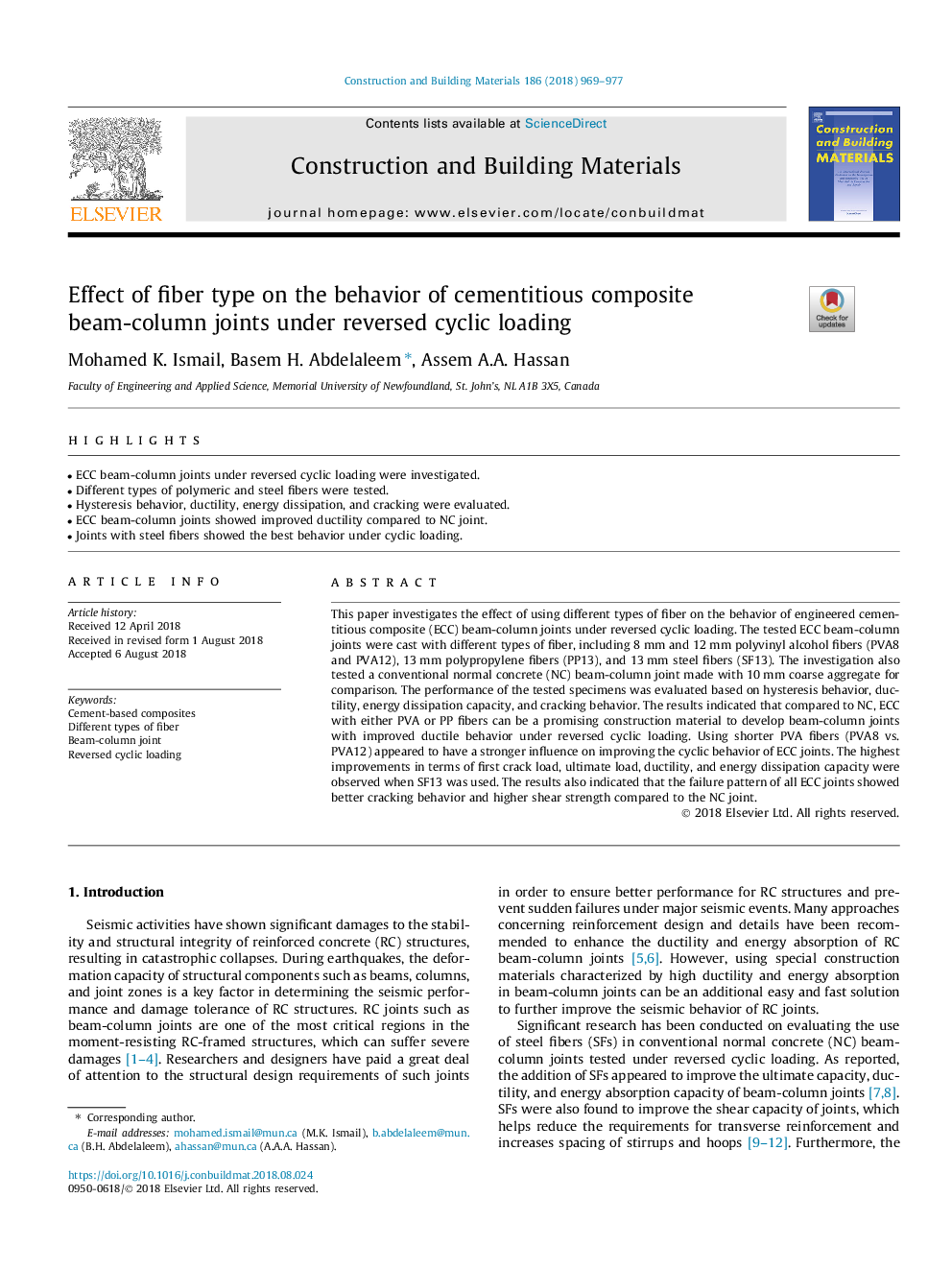| Article ID | Journal | Published Year | Pages | File Type |
|---|---|---|---|---|
| 11001037 | Construction and Building Materials | 2018 | 9 Pages |
Abstract
This paper investigates the effect of using different types of fiber on the behavior of engineered cementitious composite (ECC) beam-column joints under reversed cyclic loading. The tested ECC beam-column joints were cast with different types of fiber, including 8â¯mm and 12â¯mm polyvinyl alcohol fibers (PVA8 and PVA12), 13â¯mm polypropylene fibers (PP13), and 13â¯mm steel fibers (SF13). The investigation also tested a conventional normal concrete (NC) beam-column joint made with 10â¯mm coarse aggregate for comparison. The performance of the tested specimens was evaluated based on hysteresis behavior, ductility, energy dissipation capacity, and cracking behavior. The results indicated that compared to NC, ECC with either PVA or PP fibers can be a promising construction material to develop beam-column joints with improved ductile behavior under reversed cyclic loading. Using shorter PVA fibers (PVA8 vs. PVA12) appeared to have a stronger influence on improving the cyclic behavior of ECC joints. The highest improvements in terms of first crack load, ultimate load, ductility, and energy dissipation capacity were observed when SF13 was used. The results also indicated that the failure pattern of all ECC joints showed better cracking behavior and higher shear strength compared to the NC joint.
Related Topics
Physical Sciences and Engineering
Engineering
Civil and Structural Engineering
Authors
Mohamed K. Ismail, Basem H. Abdelaleem, Assem A.A. Hassan,
